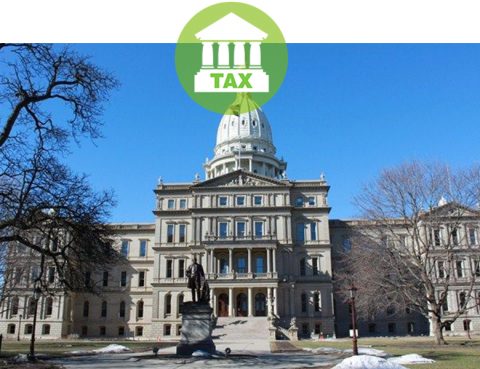
Tax treatment for investments varies dramatically based on factors such as type of investment, type of income it produces, how long you’ve held it and whether any special limitations or breaks apply. On top of that, economic uncertainty has made tax planning for investments especially challenging this year. And there are many additional factors to…

Tax advantage rates on “ordinary income” are higher than those that apply to much of your investment income. Ordinary income generally includes salary, income from self-employment or business activities, interest, and distributions from tax- deferred retirement accounts. Some of it may also be subject to payroll tax, or you may have to pay the alternative…

January 15, 2021 – The Michigan Strategic Fund today approved two grant programs – the Michigan Small Business Survival Grants and the Michigan Stages Survival Grants – totaling $58.5 million in relief to help meet the urgent needs of small businesses and live event venues impacted by the COVID-19 virus, the Michigan Economic Development Corporation…

The Consolidated Appropriations Act, 2021 (the “CAA”), signed into law on December 27, 2020, is the second-largest federal stimulus package of 2020, following the CARES Act. The CAA provides $900 billion in COVID relief and reserves $284 billion for small businesses through a second round of Paycheck Protection Program (“PPP”) forgivable loans, or as some…

On Sunday, December 27, President Trump signed the Consolidated Appropriations Act, 2021 (CAA, 2021). The Act contains numerous individual, business, payroll, disaster, and energy-related tax provisions, as well as tax extenders. Many of the provisions, including the deductibility of expenses used with PPP loans as well as $600 stimulus payments, and an extension of payroll…

The CARES (Coronavirus Aid, Relief, and Economic Security) Act may be best known for its provisions designed to shore up the economy as the nation copes with the COVID-19 pandemic. These include distributing Economic Impact Payments to individuals and offering Paycheck Protection Program (PPP) loans to businesses. But the act also includes several provisions that…

Even before the COVID-19 crisis, construction technology was transforming the way contractors go about their business. Whether this transformation was happening rapidly or gradually is up for debate, but there’s little doubt that change was (and is) occurring. The pandemic will likely accelerate the technological (r)evolution as contractors look for ways to work more safely…

The COVID-19 pandemic is unlike any other crisis we have faced in decades. As contractors continue to work back toward normalcy, it’s critical to learn from recent experience and apply those lessons to preparing for the inevitable disasters and economic downturns of the future. Review Jobs, Backlog and Expenses Take inventory of current jobs and…

Classify Carefully The classification of workers as independent contractors or employees has significant implications — both tax and nontax — for all businesses. But this issue is particularly important for construction companies, given the widespread use of subcontractors in the industry. In recent years, the IRS has been cracking down on employers that misclassify employees…

Construction companies continue to face a serious skilled labor shortage. Although demand for qualified workers has been increasing steadily over the last several years, the impact of the Great Recession continues to limit the supply of candidates to fill those jobs — yes, even all these years later. And the short- and long-term effects of…
